Nvidia’s Deep Learning Super Sampling (DLSS) technology uses AI to improve frame rates and image quality. The latest version, DLSS 4, features Multi Frame Generation, which produces additional frames to increase performance. Nvidia’s new transformer model enhances image quality by improving stability, reducing ghosting, and preserving detail in motion. The technology has been incorporated into over 700 games and apps, and Nvidia’s GeForce RTX 50-series GPUs provide the necessary processing power to support DLSS 4.
Nvidia’s Deep Learning Super Sampling is a neural rendering technology suite that runs on GeForce RTX Tensor Cores. Nvidia says it improves frame rates while delivering crisp, high-quality images comparable to native-resolution rendering. The technology has been incorporated into over 700 games and apps.
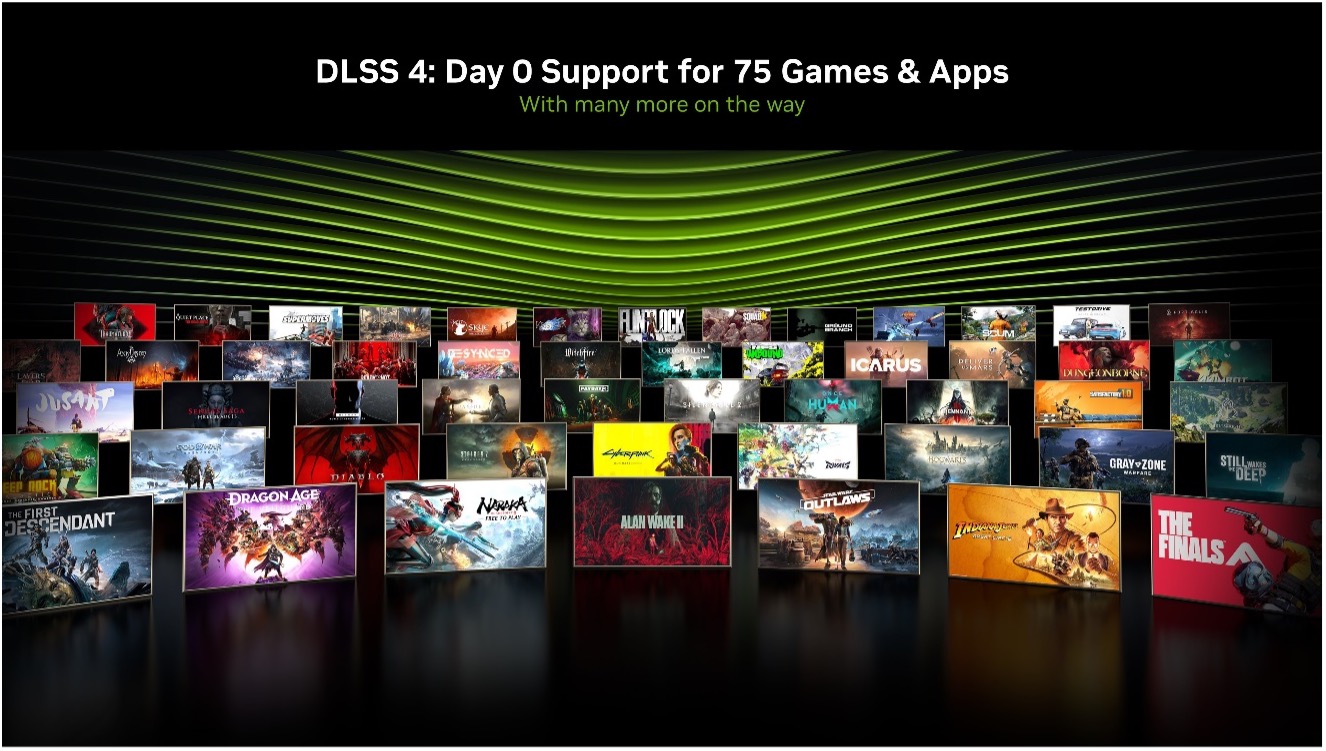
At CES 2025, the company introduced DLSS 4, which features Multi Frame Generation, on the new GeForce RTX 50-series graphics add-in boards and laptops. Initially, 75 games and apps were announced to support the multi-frame capabilities.
Nvidia says DLSS Multi Frame Generation will produce up to three additional frames per traditionally rendered frame, working with the complete suite of DLSS technologies to increase frame rates. That performance improvement on a GeForce RTX 5090 AIB enables 4K resolution at 240 fps fully ray-traced images.
Nvidia states that its DLSS Ray Reconstruction, DLSS Super Resolution, and Deep Learning Anti-Aliasing (DLAA) enable the first real-time application of transformer models in graphics, similar to those used in AI models like ChatGPT, Flux, and Gemini. According to the company, DLSS transformer models enhance image quality by improving temporal stability, reducing ghosting, and preserving more detail in motion.
DLSS 3 Frame Generation’s AI model uses game data, including motion vectors and depth, along with an optical flow field from the GeForce RTX 40-series Optical Flow Accelerator, to generate one additional frame. Generating multiple frames would increase computational requirements, as both the Optical Flow Accelerator and the AI model would be needed for each newly generated frame. This would impact GPU performance, potentially reducing input frame rates.
DLSS 4 Multi Frame Generation utilizes Nvidia’s new Blackwell GPU and DLSS software advancements to enable the creation of multiple frames.
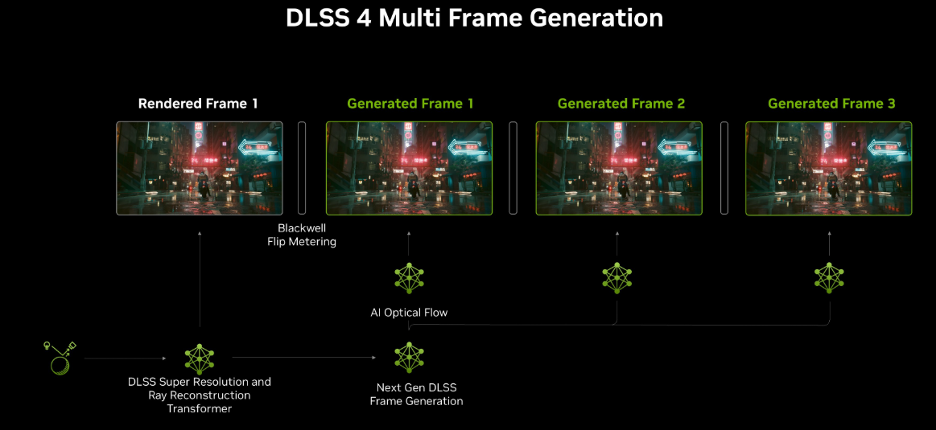
Nvidia says its new frame-generation AI model offers improved performance and uses fewer resources. It runs once per rendered frame to generate multiple frames, using 30% less VRAM and completing tasks faster. For instance, in Warhammer 40,000: Darktide, this model provides a faster frame rate and uses 400MB less memory at 4K, max settings, using DLSS Frame Generation.
The company has also optimized the generation of the optical flow field by replacing hardware optical flow with an efficient AI model. This change, says Nvidia, combined with other AI models, reduces the computational cost of generating additional frames.
To maintain performance, the GPU must execute multiple AI models for super resolution, ray reconstruction, and multi-frame generation within a brief time frame—the GeForce RTX 50-series GPUs have Nvidia’s fifth-generation Tensor Cores, which provide increased AI processing performance.
Once new frames are generated, they are paced to deliver a smooth experience. Previous versions of DLSS used CPU-based pacing, which could lead to inconsistent frame pacing and impact smoothness.
Nvidia says the Blackwell display engine addresses those complexities by using hardware flip metering and shifting frame pacing logic to the display engine. This enables the GPU to manage display timing more precisely. The display engine has also been enhanced to support higher resolutions and refresh rates.
The combination of new hardware and software innovations enables DLSS 4 to generate a significant portion of pixels, while maintaining image quality, smoothness, and latency.
The trick is transformers
Transform models will bring image quality improvements for all GeForce RTX gamers, says Nvidia.
DLSS 4 features a major architecture upgrade for DLSS ray reconstruction, DLSS super resolution, and DLAA with the graphics industry’s first real-time use of a transformer-based model.
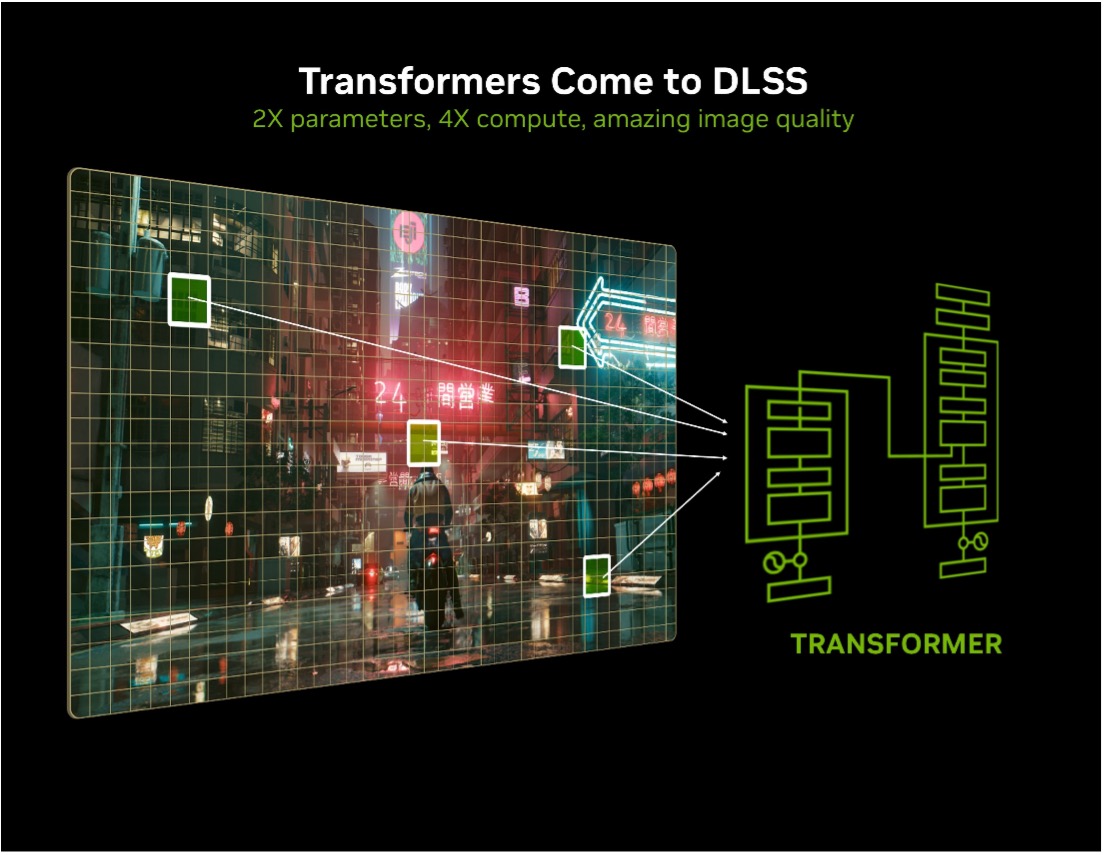
DLSS previously utilized convolutional neural networks (CNNs) to generate new pixels by analyzing localized context and tracking changes in those regions over successive frames. After years of tweaking, the limitations of the DLSS CNN approach had become apparent.
Nvidia’s new DLSS transformer model employs a vision transformer that allows self-attention operations to assess the importance of each pixel across the entire frame and over multiple frames. With increased parameters, the model gains a deeper understanding of scenes, producing pixels with improved stability, reduced ghosting, and smoother edges, says Nvidia.
The company claims the new transformer model for ray-traced content, or ray reconstruction, enhances image quality, particularly in scenes with complex lighting conditions. For instance, in scenes from Alan Wake 2, the model increases stability on detailed objects, which reduces ghosting on moving parts and eliminates shimmering on textures—all of which contribute to a more immersive gaming experience.
Nvidia says the transformer model for super resolution has shown positive results and will be available in beta for users to evaluate and provide feedback before its official release. The company says it has demonstrated improved temporal stability, reduced ghosting, and enhanced detail in motion.
This new transformer model architecture is designed to support ongoing image quality enhancements over time, similar to the continuous improvements delivered with the CNN architecture over the past six years.
So with that preamble, we were anxious to run the new AIB through some calisthenics and see how well it could perform compared to its older but respected sibling that came out in September 2022. And although 15 months doesn’t seem long in human time, it’s 20 years, a generation, in GPU time. So the old, bearded, and gray RTX 4090 was unfairly compared to the new, spry, energetic RTX 5090, and it was embarrassing. Well, not really, but the improvement in performance is significant. In fact, it’s more than will ever be used by older games.
Let’s look at the numbers.
We have run three independent tests on the RTX 5090 here at our Mt. Tiburon Test Lab (MTTL). This is an abbreviated quick look at how 3DMark is used in a few games with built-in benchmarks, such as Chernobylite, Shadow of the Tomb Raider, and Cyberpunk 2077. These are games that people have.
At the same time, in two different labs, we ran more in-depth tests across multiple AIBs and dozens of games, including several newly updated DLSS 4 versions.
Benchmarks
We ran four UL 3DMark benchmark tests and Blender, and compared the RTX 4090 to the RTX 5090 at three resolutions: 2160 (4K), 1440, and 1080 (HD). The following charts tell the story.
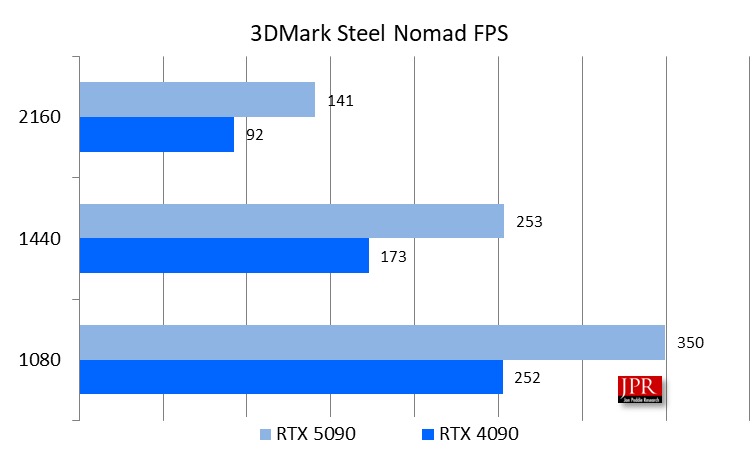
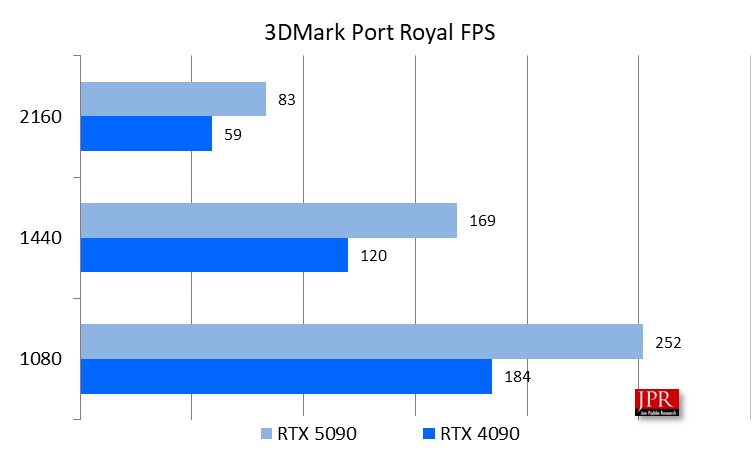
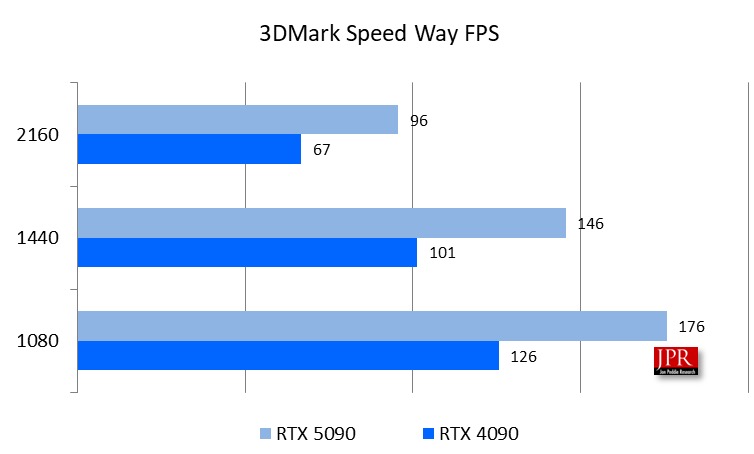
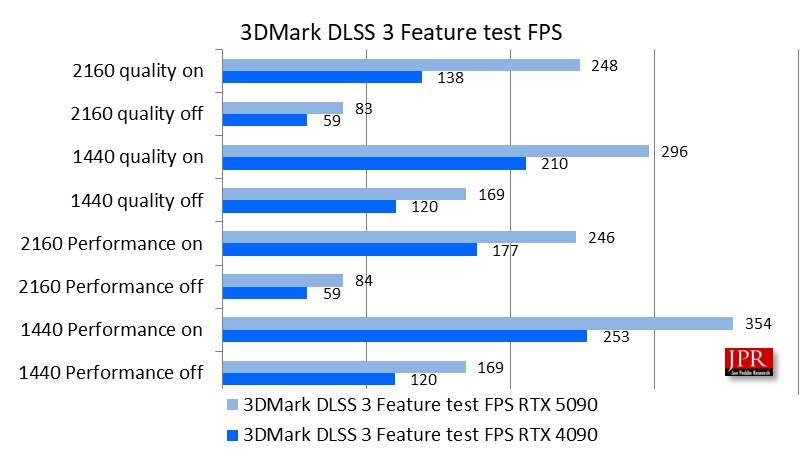
Note, the DLSS 4 test results will be presented in our BabelTechReviews sister site testing.
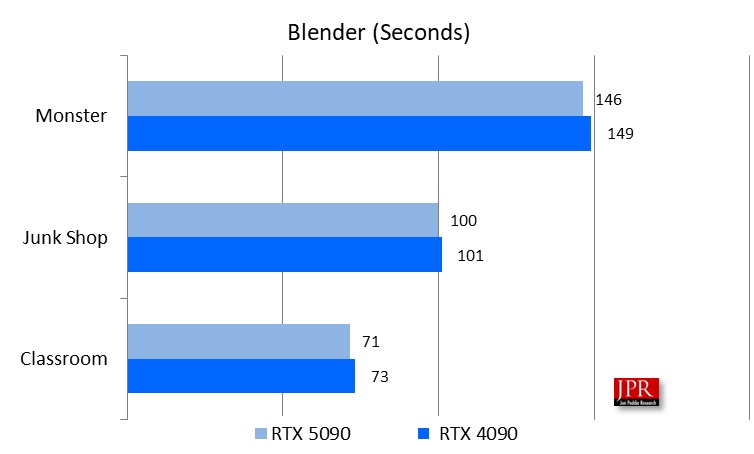
The results are not too surprising except to note that the frames per second (fps) are greatly in excess of the desired 60 fps or the acceptable 30 fps, except for noted (i.e., quality or performance), everything was set to Ultra.
Games
We also ran four games that have built-in benchmark capabilities, and again, the charts tell the story.
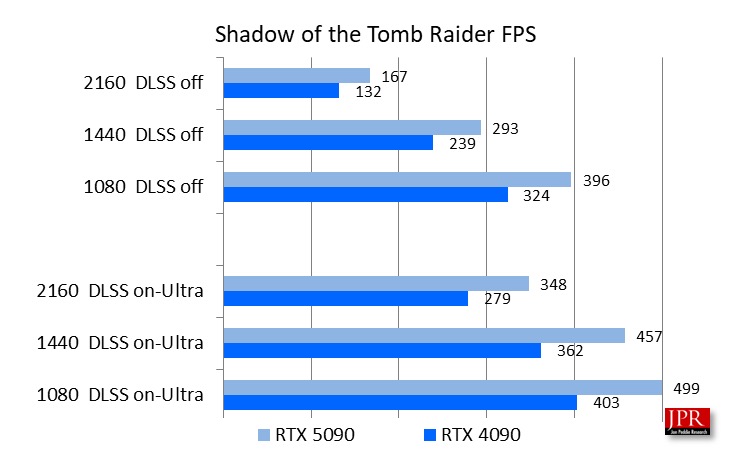
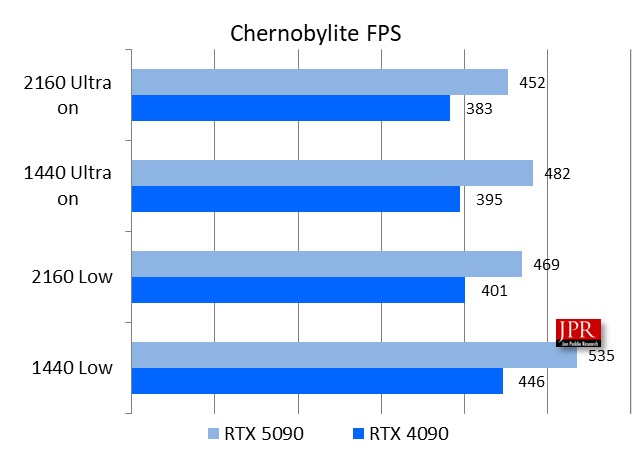
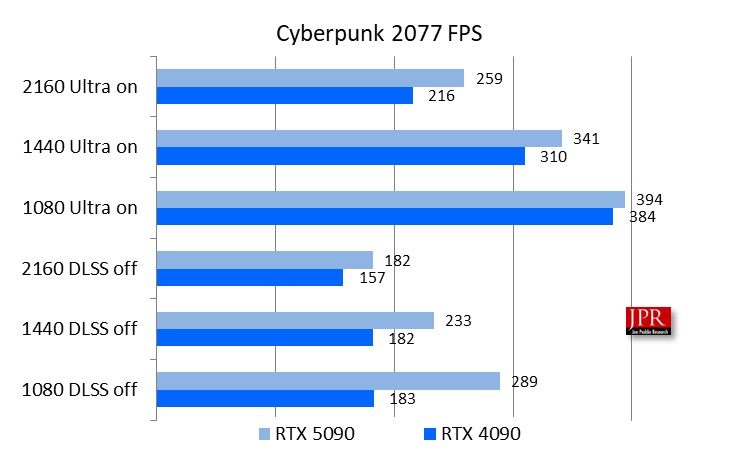
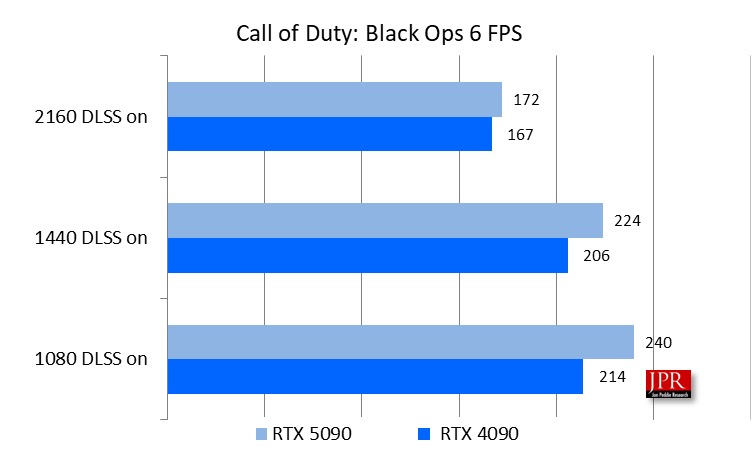
As in the benchmark tests, the fps were astoundingly high, especially on the RTX 5090.
However, the Pmark tells a different story.
We calculated the Pmark using the average of the benchmark scores for two resolutions, 2160 and 1440, on both the RTX 4090 and RTX 5090, and the RTX 4090 showed a better price-performance result.
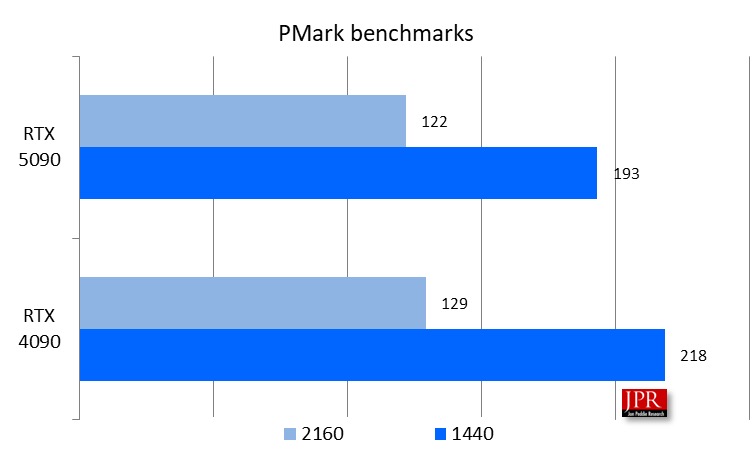
We also calculated the Pmark using the game test results, and again, the RTX 4090 showed the best price-performance results.
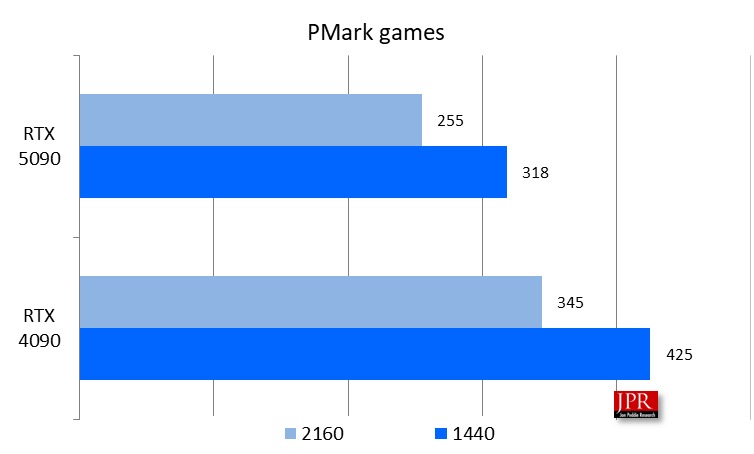
The RTX 5090 costs about 25% more than an RTX 4090 and uses 28% more power, while delivering 18% to 51% more performance.
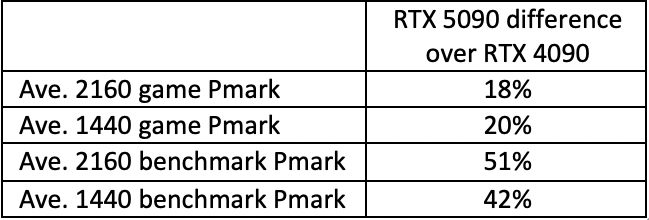
The testing environment is shown in the following table.
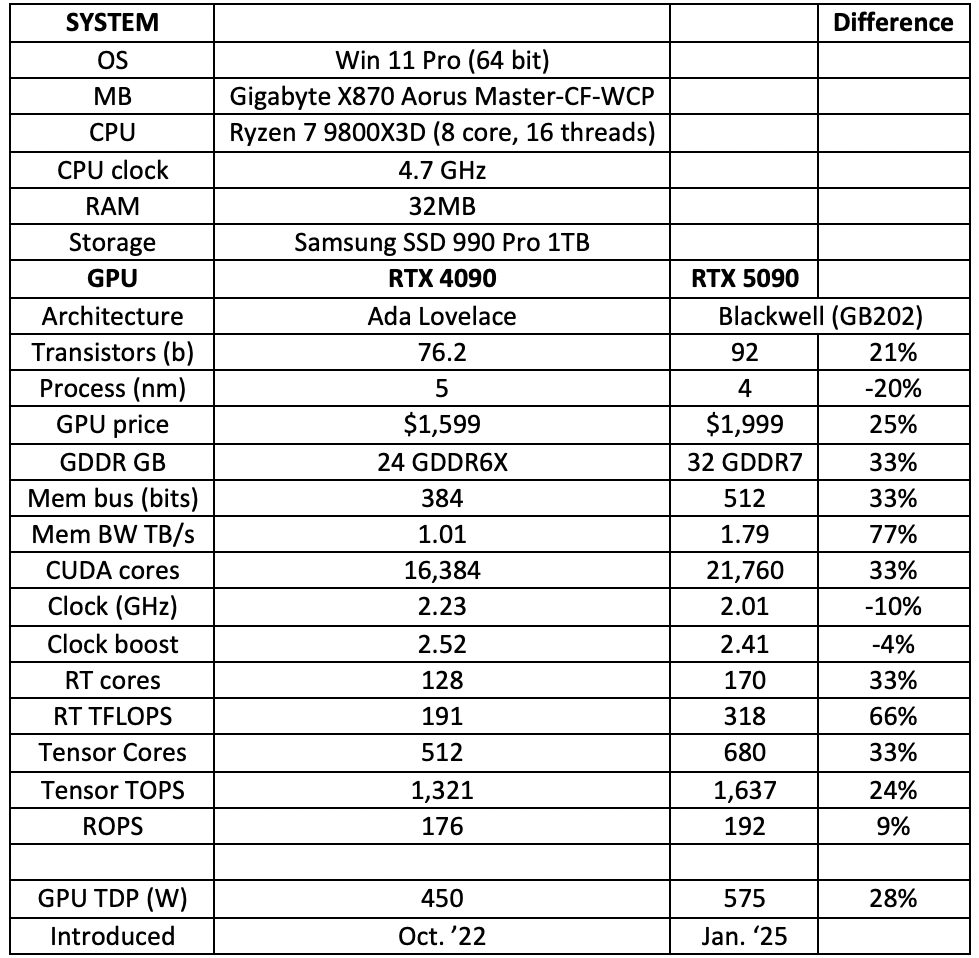
A wonder as the RTX 5090 is, even without DLSS 4, it really seems like overkill for people who already have an RTX 4090 and the usual mix of games. However, for someone with a third or fourth older-generation AIB (e.g., GTX 1080 or GTX 2080), the RTX 5090 would be an excellent investment and future-proof one’s gaming rig for several years as new game and remade games come out with DLSS 4. As mentioned earlier, we will present another round of test rests incorporating DLSS 4 where possible. This was just a quick review of the new RTX 5090 and how it stands up to the previous-generation RTX 4090. In our BabelTechReviews, we will also be comparing the RTX 5090 to the RTX 3090.
LIKE WHAT YOU’RE READING? INTRODUCE US TO YOUR FRIENDS AND COLLEAGUES.